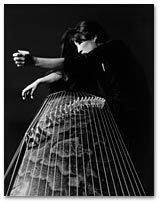will host a benefit
concert for relief efforts in Japan
concert for relief efforts in Japan
as part of The Music Room project!
Sunday April 17, 5pm in NYC!
Indian Bamboo flautist virtuoso Shashank
& Parupalli Phalgun/mridangam
Introduction by Miya Masaoka & Akiko Sasaki
A duet of Japanese Koto.
The Center - Lerner Auditorium
208 West 13 Street (7/8 Aves)
New York, NY 10014 (West Village)
New York, NY 10014 (West Village)
10% of all revenues will be donated to Japan!
We hope you'll join us for this important benefit Concert.
For more informations: www.HarmoNYom.org
To the Japanese people, we offer our condolences and best wishes!


